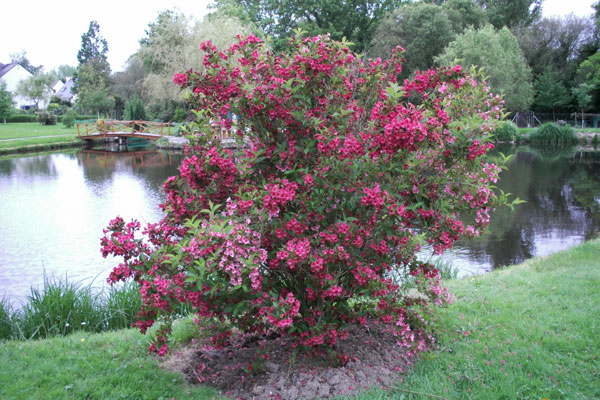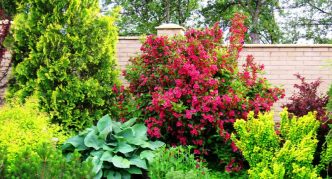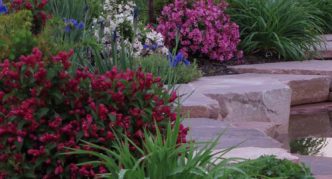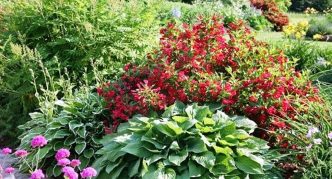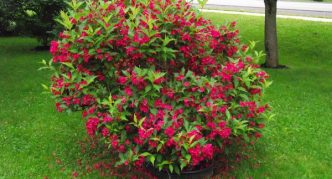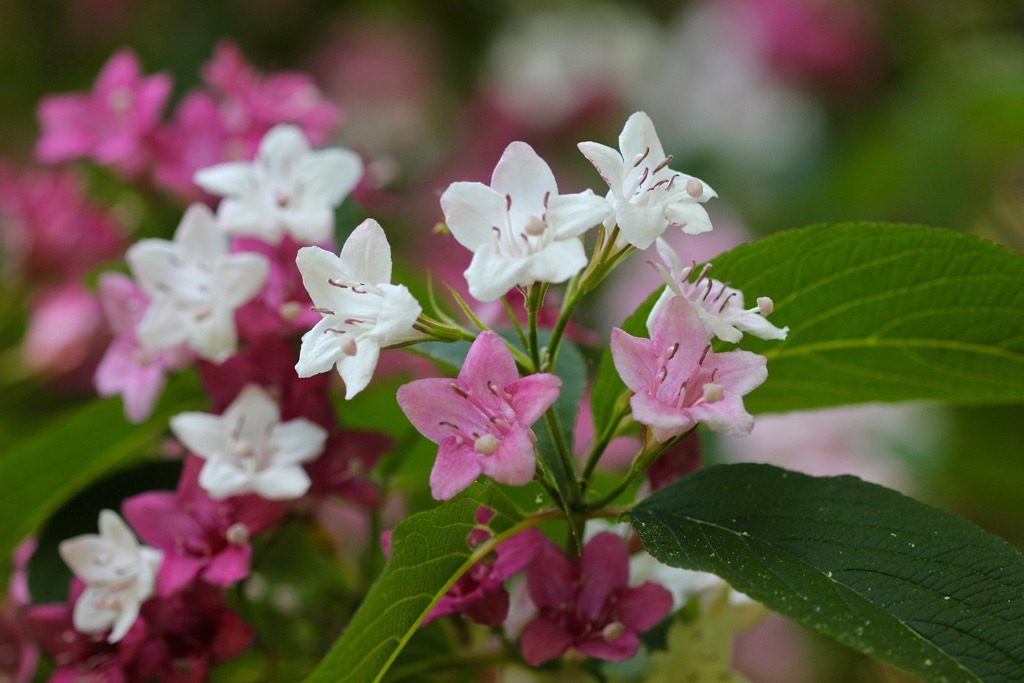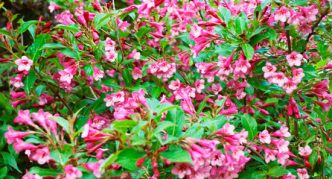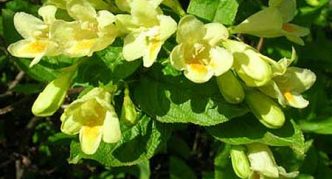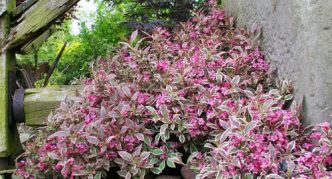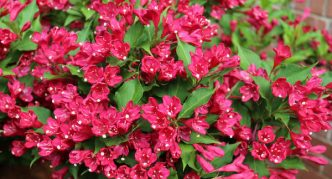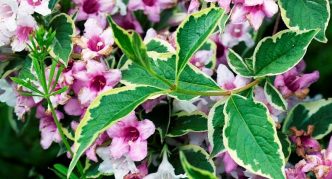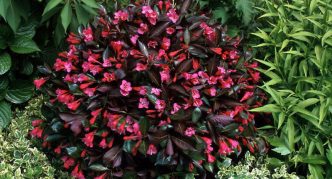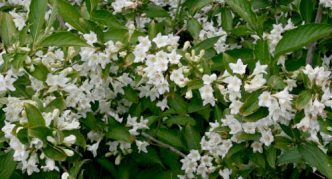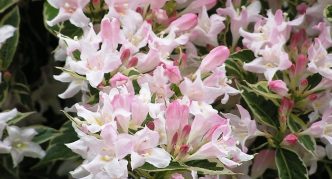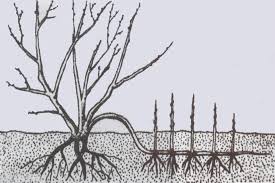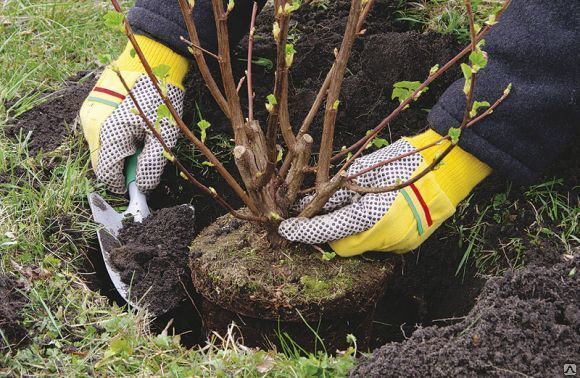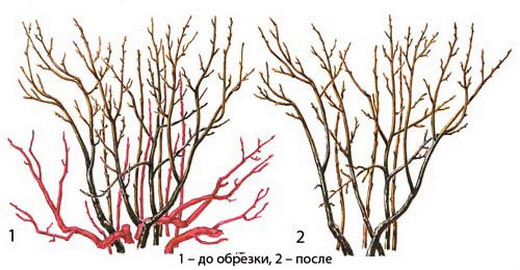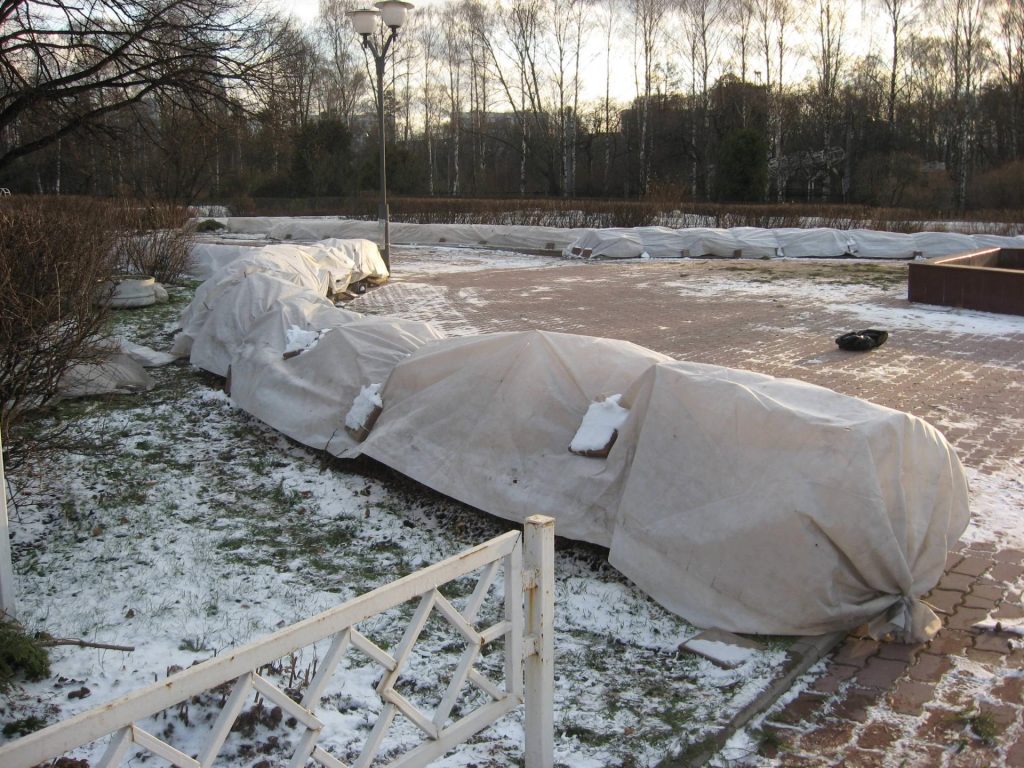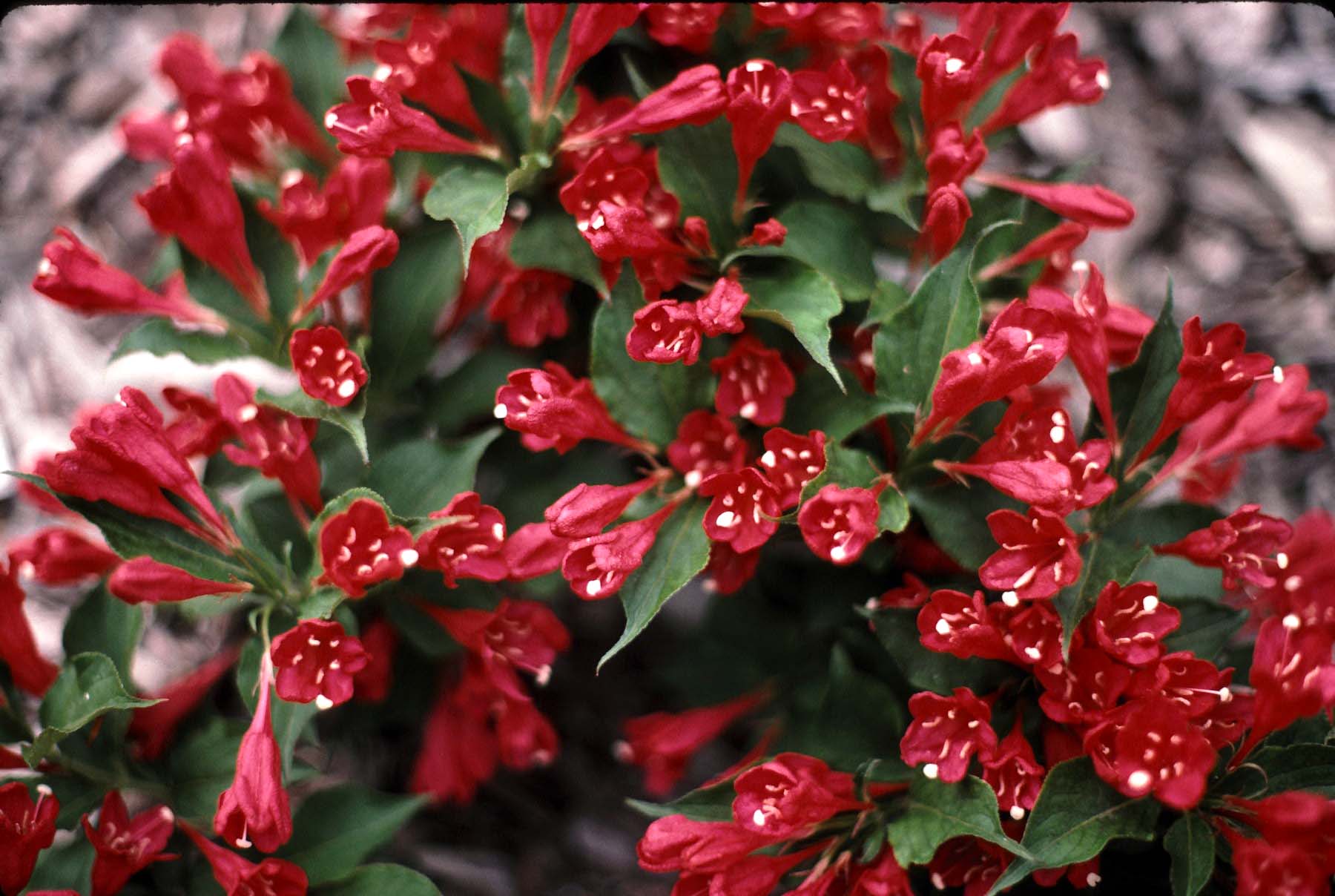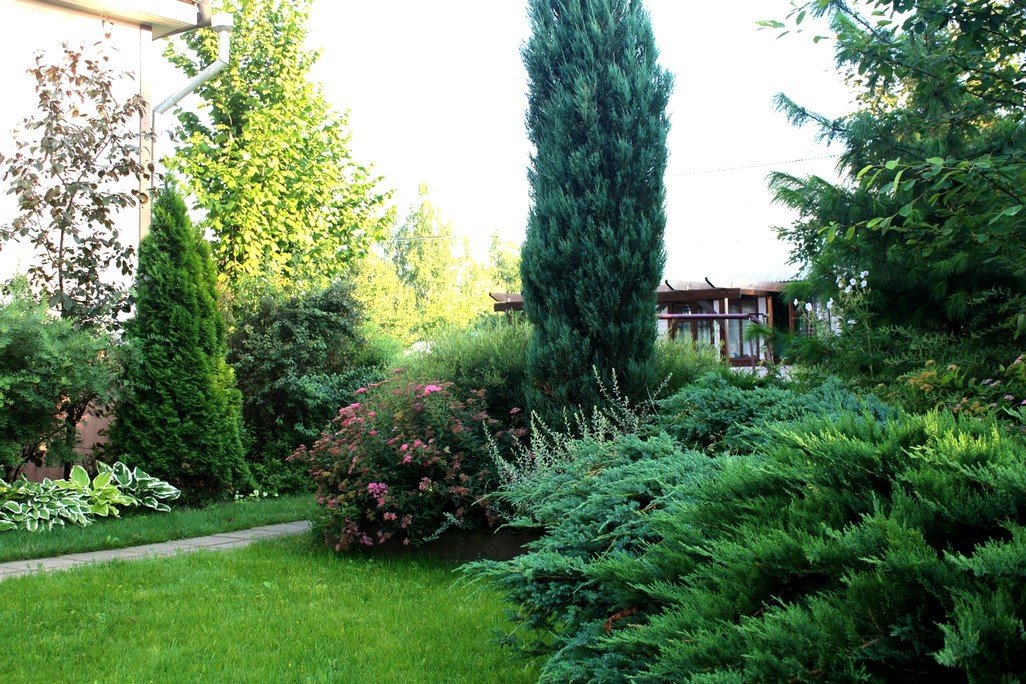Increasingly, gardeners, equipping their plots, use not only fruit-bearing trees and shrubs, but also ornamental plants. Weigela is a charming, flowering bush that will help to decorate the garden, hide an unsightly corner or create a unique composition. Undemanding conditions of keeping, ease of planting in open ground and caring for weigela, the ability to modify with the help of a haircut make this plant indispensable in landscape design.
Content
Role of weigela in landscape design
Weigela is one of the flowering ornamental shrubs, without which it is difficult to imagine a modern garden. Depending on the variety, this plant can be of different heights from 50 cm to 2 meters. Weigela blooms twice a year. In spring and autumn, shrubs are covered with incredibly beautiful numerous flowers of white, pink, yellow, lilac or crimson color. The color of the plant depends on the variety, but they all have an amazing feature - at the beginning of the bud formation, the inflorescences are very light, almost colorless, and the more the petals open, the richer the tones become.
Weigel, hardy and undemanding to the conditions of keeping, is often used in landscape compositions. It can grow both in the sun and in partial shade, moreover, it tolerates formative pruning, with which the plant can be given any shape. These qualities of a flowering shrub are just a godsend when arranging a garden. If there is a pond on the site, then the weigela blooming on the bank will revive the pacifying landscape with its colors.
Weigela of any variety can be irresistible as a single plant planted on a green lawn or become a decoration of a composition. She is also good in the company of conifers, arranged according to the principle of difference in shapes and colors, and as a transitional link in an ensemble of deciduous trees and ground cover flowering plants. From low-growing varieties of weigela, cute mixborders are obtained, decorating a garden path or bordering a certain landscape form. From tall varieties of shrubs, they form a hedge to create a natural zoning of the garden. Weigela also looks good among stones, therefore it is often planted at the foot of a rock garden.
Variants of use in the personal plot: photo
- The flaming weigela bush in the center of the green composition attracts the eye
- Low-growing varieties of weigela are an excellent solution for a mixborder along a retaining wall
- Weigela bush in the company of different host species creates a picture in a natural style
- A successful combination of weigel of different varieties makes a great hedge
- Weigela blooming on a calm lawn - a bright flash on a green surface
What climate does the shrub prefer
Weigela is a deciduous shrub of the honeysuckle family. In nature, the plant is found in the Far East and East Asia. The cultivated varieties are successfully grown in many regions of our country. In areas with cold winters, weigela needs to be sheltered, especially young shrubs, since the winter hardiness of the plant increases with age. In dry areas, regular watering is required for good growth and abundant flowering.
The genus Weigela has 15 species and more than a hundred hybrid forms. The progenitors of today's numerous varieties are flowering and hybrid weigela. By crossing the mother plants with the Korean Weigela, plants of various shapes and heights with a variety of color options for leaves and flowers were obtained. All these shrubs are distinguished by their hardiness and relative winter hardiness.
Recommended varieties for growing in the Moscow Region, the Leningrad Region, the Urals and Siberia
| Weigela variety | Description of the variety |
| Early | Shrub 1.5–2 m high, with drooping shoots, blooms profusely for 10 to 30 days in late May or June. Blooming again in September. The flowers are bright pink, in the throat - crimson |
| Middendorf | Shrub 1–1.5 m high, with ascending shoots, with large bright leaves. In spring and autumn, it is covered with yellow, orange-speckled tubular flowers. Flowering lasts 25-30 days |
| My monet | A low-growing, slow-growing shrub 0.5–0.7 m high, with beautiful foliage - the colors on the leaves change from green and white to pink. In June and August, it blooms with bright pink-lilac flowers |
| Red prince | Fast-growing deciduous shrub up to 1.5 m tall. The foliage is bright green, bell-shaped scarlet flowers appear in May and August |
| Nana Purpurea | The undersized, wide-growing shrub is very beautiful in spring, thanks to the burgundy foliage, which turns green by mid-summer. Bright pink bell-shaped flowers bloom in June |
| Nana Variegata | Slow growing shrub with beautiful leaves and light edging. Delicate pink bell flowers appear closer to the middle of summer |
| Blooming Alexandra | A shrub with purple leaves grows a little over a meter. Bell-shaped pink flowers appear in large numbers in June - July |
| Weigela Candida | Widely growing shrub reaches no more than 2 m in height. White bell-shaped flowers appear in June. Grows well in sunny places with fertile soil |
| Weigela Splendid | A beautiful shrub, about 1.5 m high, attracts attention with pale pink tubular flowers with elongated, pointed petals |
All varieties described are capable of withstanding frosty winters under cover. If the shoots freeze, then in the spring they are cut off, and the shrub, without problems, is restored.
It is more difficult for weigela in the southern regions, since the plant cannot stand extreme heat. In the south, it is advisable to plant this shrub so that at lunchtime it is in the shade and the sun does not burn the shoots. Under these conditions, the described varieties are successfully grown in hot climates. Here they also have time to ripen the seeds, which does not always happen in central Russia, in the Urals and in Siberia.
More about the experience of growing in the Moscow region in article.
Popular varieties of weigela in the photo
- Weigela Early - the progenitor of many modern varieties
- Weigela Middendorf flowers are pale yellow at the beginning of flowering, become bright lemon in color after the flower is fully opened
- Pink flowers and light weigela leaves with a white border My Monet give a feeling of tenderness
- The Red Prince is one of the most abundant flowering weigels
- Nana Purpurea's pink weigela bells give a sense of simplicity - the perfect shrub to create a rustic landscape
- Charming flowers and beautiful fringed leaves give the Nana Variegata Weigel a sophistication
- Blooming Alexandra - style, grace, beauty
- White flowers of weigela Candida are delicate and beautiful from the beginning to the end of flowering
- Weigela Splendid differs from other varieties in the shape of the flower and charming white-pink tones of the petals
Reproduction methods
Weigela reproduces well by sowing seeds, rooting cuttings and layering. It is worth noting that in order to get a varietal beauty, you need to propagate it only by cuttings or layering. The resulting seedling will retain all the characteristics of the mother plant, and the first flowering will occur in 2-3 years. Sowing seeds is used in cases where you need to immediately get a large amount of planting material, but such seedlings will bloom only after 5-6 years and, possibly, will differ from the parent in appearance.
Sowing seeds
Sowing seeds is best done in a specially designated school, where the plants can stay for three years, since only a three-year-old seedling can be planted in a permanent place. It is advisable to fence off a small bed (school) with bumpers, install arcs and cover with agrofibre. Such a greenhouse will protect seedlings from wind, sun and moisture loss.
Weigela seeds germinate well if sown in the harvest year. Sowing can be carried out in the spring, after the soil has completely warmed up - usually this is the second half of May. Podwinter sowing also gives good results. It is more often carried out in November, after the first frost.
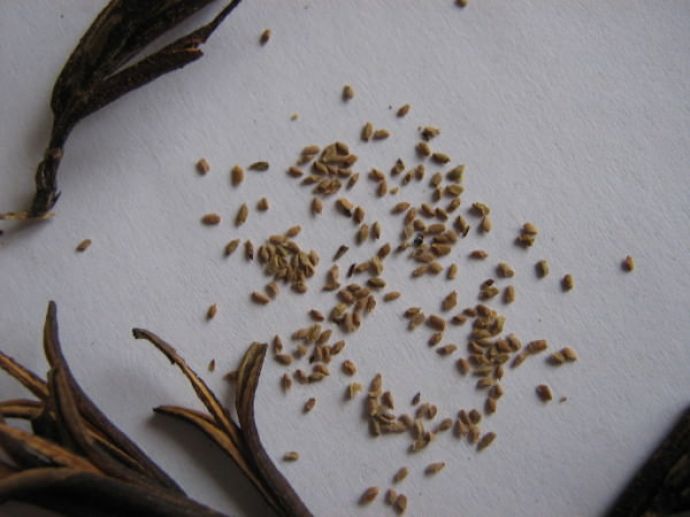
Weigela seeds in the harvest year have almost one hundred percent germination, but over time it decreases
Spring sowing of seeds:
- The day before sowing, spill the bed abundantly with a solution of phytosporin.
- Spread weigela seeds on a leveled surface.
- Sprinkle on top with a small layer of wet coconut, peat or sand and compact.
- Close the greenhouse tightly with agrofibre.
It will be necessary to moisten the crops for the first time every day. It is most convenient to use a spray bottle so as not to wash off the seeds. Seedlings will appear in 3-4 weeks.
Sowing seeds before winter:
- After the first frost on the prepared bed, spread the seeds.
- Sprinkle with a light layer of peat or coconut.
- Cover the planting from above with sawdust, straw or agrofibre.
- In the spring, remove insulation from the garden and make a greenhouse with arches.
The grown seedlings are carefully thinned out. There is no need to pull out excess shoots - it is better to cut them off with scissors.
Weigela can be sown in containers and grown at home. In the summer, the seedlings are transferred to the garden, choosing a quiet, shady place for them.
By cuttings
Successful terms for cuttings are March and May-June. In the first case, cuttings are cut from lignified last year's shoots, in the second from semi-lignified young growths.
For summer rooting, cuttings are harvested from the bottom of the young shoot. The green tops of the growths are not used for rooting.
Rooting step-by-step process:
- Cuttings about 10 cm long are cut from the cut shoots. In summer cuttings, two upper leaves are left, shortening them by half, the rest are removed.
- The box is filled with a 1: 1 mixture of peat and sand.
- Cuttings are dusted with root powder.
- Depressions are made in the soil with a stick at a distance of 10-15 cm from each other.
- The stalk is 2/3 immersed in the holes and pressed against the ground.
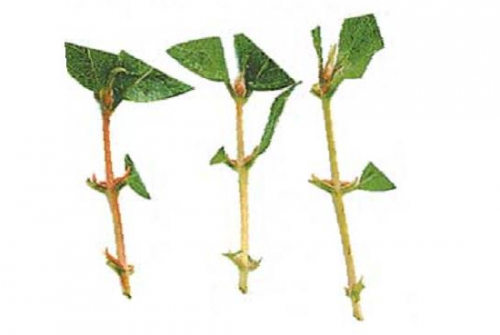
The lower leaves of the weigela cuttings are removed, and the upper leaves are shortened to reduce moisture loss
If grafting occurs in summer, the container is taken out into the garden and placed in a greenhouse under agrofibre or film, but with mandatory ventilation. When rooting in spring, cuttings are placed in a bright, warm, but non-sunny place in the room.
When the seedlings start growing, we can assume that rooting was successful. They are seated in separate pots and young shoots are pinched.Emerging buds must be removed so that the strength of the plant goes to the formation of roots.
Further care for the cuttings does not cause any difficulties. The main requirements are a shady, windless place, timely watering and feeding. Any mineral and organic fertilizers are suitable for flowers, which are applied in turn.
When preparing a solution for root dressing, it is important to observe the proportions indicated in the instructions. It is always better to underfeed the plant than to overfeed, so if in doubt, it is better to dilute the preparation with a little more water.
Rooting cuttings
The easiest and most reliable way to propagate weigela is by rooting cuttings.
In early spring, before bud break, a shoot is chosen that is a short distance from the ground. Loose fertile soil is poured under it with a mound.
Rooting order layering:
- In the place where the branch will touch the ground, the bark is slightly scratched to speed up the formation of roots.
- The shoot is bent down, secured with a hairpin and covered with soil.
- Moisten slightly and cover with a film - the soil in this place must always be moist.
Over the summer, the cuttings will take root and already next spring it can be separated and planted in the school.
Video: Weigela - planting, care and description of the plant
Features of planting weigels in open ground
In order for the weigela bush to take root and delight the owners for many years, it is very important to choose a suitable place in the garden. This plant feels good both in partial shade and in the sun, however, for the southern regions, preference should be given to shady places. In areas with an unpredictable climate, it is better to plant a weigela on the south side of the building, which will protect it from cold northerly winds. It is important that the area with the planted plant is not flooded with melt water and does not sink during the rains.
A pit is prepared for planting, the size of which depends on the fertility of the soil. On good, fertilized soil, it is enough to dig a hole 30x30 cm, on poor 50x50 cm.
Step by step planting process:
- Drainage (gravel, crushed stone or expanded clay) is laid at the bottom of the prepared pit.
- A small amount of soil mixed with fertilizers is poured (Kemira Lux, Kemira floral or any universal for spring planting).
- The pit is filled up to half with a prepared mixture of garden soil, sod, compost, peat and sand taken in equal amounts.
- A seedling is placed in the center of the hole so that after planting the neck of the plant is level with the ground, the roots are straightened and sprinkled with prepared soil.
- The soil around the plant is compacted and watered.
- After watering, the soil is poured, a near-trunk circle is formed and the surface is mulched.
Subtleties of care
Weigela, planted according to all the rules, will not cause much trouble in care. A young plant will need slightly more frequent watering during survival. It is best to water it in the morning or evening with water at room temperature. Mulch with a layer of 8–10 cm will significantly reduce labor costs, since moisture remains under it longer, which means you can water less often. Weeding and loosening on a mulched surface is also practically not needed.
Top dressing
If the planting pit was filled with fertile soil with fertilizers, then the first two years of feeding the plant are not needed.
Further fertilization:
- in early spring, a mineral complex fertilizer containing nitrogen, phosphorus and potassium is applied;
- with the beginning of the formation of buds, the bush is fed with phosphorus-potassium fertilizers, which will provide a long bright flowering and prepare the shoots for winter;
- the third time, fertilizers are applied in the fall, for digging, scattering 150 g of ash and 250 g of dolomite flour or autumn mineral fertilizers in the amount recommended by the manufacturer around the perimeter of the trunk circle.
In spring and summer, it is better to apply fertilizing in liquid form, diluting the fertilizer in water - this way the plant will receive the necessary nutrients faster. It is better to do this after watering or rain to avoid scalding the roots.
For thermophilic plants, it is very important not to violate the principle of feeding, as this can adversely affect the wintering of the shrub. Nitrogen stimulates the growth of shoots, so it can be applied only in the first half of summer. Further, the shoots need to mature so as not to freeze in winter, and phosphorus and potassium will help in this.
Pruning features
Like many ornamental shrubs, weigela needs pruning. Broken and frozen shoots are removed from young plants in early spring. Adult bushes need pruning after flowering - all faded shoots are shortened, and if this is done on time, then young growths will have time to bloom at the end of summer. Re-flowering will not be as lush as the first, but it will also decorate the bush and delight the owners.
Aging weigela bushes will need rejuvenating pruning, in which young shoots are shortened by about 1/3, and branches older than 3-4 years are completely removed. Sometimes gardeners cut off all shoots, and the shrub easily tolerates such an operation.
Preparing for winter
In most of our country, weigela needs to be sheltered for the winter. Without shelter, the shrub will survive the winter only in the southern regions, where the thermometer rarely drops below 0aboutFROM. Here it is enough to put a mound of earth 20-30 cm high around the plant and mulch.
Weigela's frost resistance increases with maturation, so young shrubs are especially carefully covered. Before the onset of frost, prepare the trunk circle - weed, loosen and cover with dry soil, with a layer of at least 20 cm.Mulch with straw or sawdust on top.
Plants begin to shelter directly after the first frost. This should be done in dry weather, as humidity can lead to rotting shoots and the appearance of mold.
For shelter over a bush, weigels construct a frame or crate and wrap it with agrofibre or burlap in 2-3 layers. From above, the structure is covered with a film and securely fixed. This must be done so that, during possible thaws and rains, water does not penetrate inside, but at the same time there remains air access. It is good to use hydro or vapor barrier for these purposes, which are sold in all hardware stores. This material allows air to pass through and at the same time repels water.
If the weigela shrub is short, you can try to bend the branches. For this, the plant is wrapped in burlap or agrofiber and tilted to the ground. Straw, spruce branches, dry leaves are placed under the branches and fixed with arcs. From above, the structure is also insulated with any available material and covered with a film.
Possible growing problems
Weigela is an unpretentious plant and does not cause much trouble when growing. Sometimes it happens that a planted plant develops normally, but does not bloom in due time. It is difficult to say what is the reason, but often, after transplantation, the shrub comes to life and pleases the owners with bright flowering. Perhaps the location was poorly chosen, or the composition of the soil did not suit the plant.
Of the pests, aphids, spider mites or caterpillars can attack the weigela. At the first signs of the appearance of insects, it is necessary to treat the shrub with an insecticide. Today on sale you can find a huge amount of pesticides for all occasions. However, it is worth giving preference to biological preparations, such as Fitoverm, Akarin, Iskra-Bio - they bring no less benefits than their poisonous counterparts, however, they do not harm the environment. It is only important not to spray the plants with these preparations during flowering, so that the bees do not suffer.
Gardeners reviews
… Weigels need to be covered for the winter.The trunk circle is covered with leaves and spruce branches, the branches are tied, bent and covered. Weigels are best propagated in mid-June with green cuttings. Since the weigel has an opposite leaf arrangement, the lower cut of the cutting is made even. The lower cut of the cutting is treated with heteroauxin, planted in a mixture of peat and sand and covered with a jar. This method guarantees 100% survival rate.
I bought today weigela florida purple, with small leaves and flower buds are visible. While I planted it in the ground and put it on the window. Now I am suffering when it will be possible to put her in the OG. Last year, one weigela almost ditched, planting it in the OG in May. True, I did not cover her with anything, I just stuck it in the ground and that's it. She froze, poor thing, but over the summer she grew branches right from the ground, which in October decided to bloom. With a new bush, I don't want to make any more blunders.
I boast of weigelka ... Bush is 2 years old, this year it just pleases with an abundance of flowering. But for this I had to fill it up to the very top with snow, in short, I made a snowdrift out of it all winter. Otherwise, the level of snow freezes ...
Still, weigela weigela is different. There are varieties that in our climate will be the same as in Kiev, but there are varieties that freeze to the root in the most “innocent” winters.
I bend my Bristol Ruby on both sides. Takes 5 minutes. Does not freeze. The only problem is that I can't cut it, because it blooms all summer. Now there are almost no leaves, but blooming ...
By following simple agronomic techniques for planting and caring for a weigela, you can get a beautiful flowering shrub. The variety of species and forms of this plant with bright, or, conversely, delicate flowers, may cause someone to want to grow their own collection of varietal weigels.

